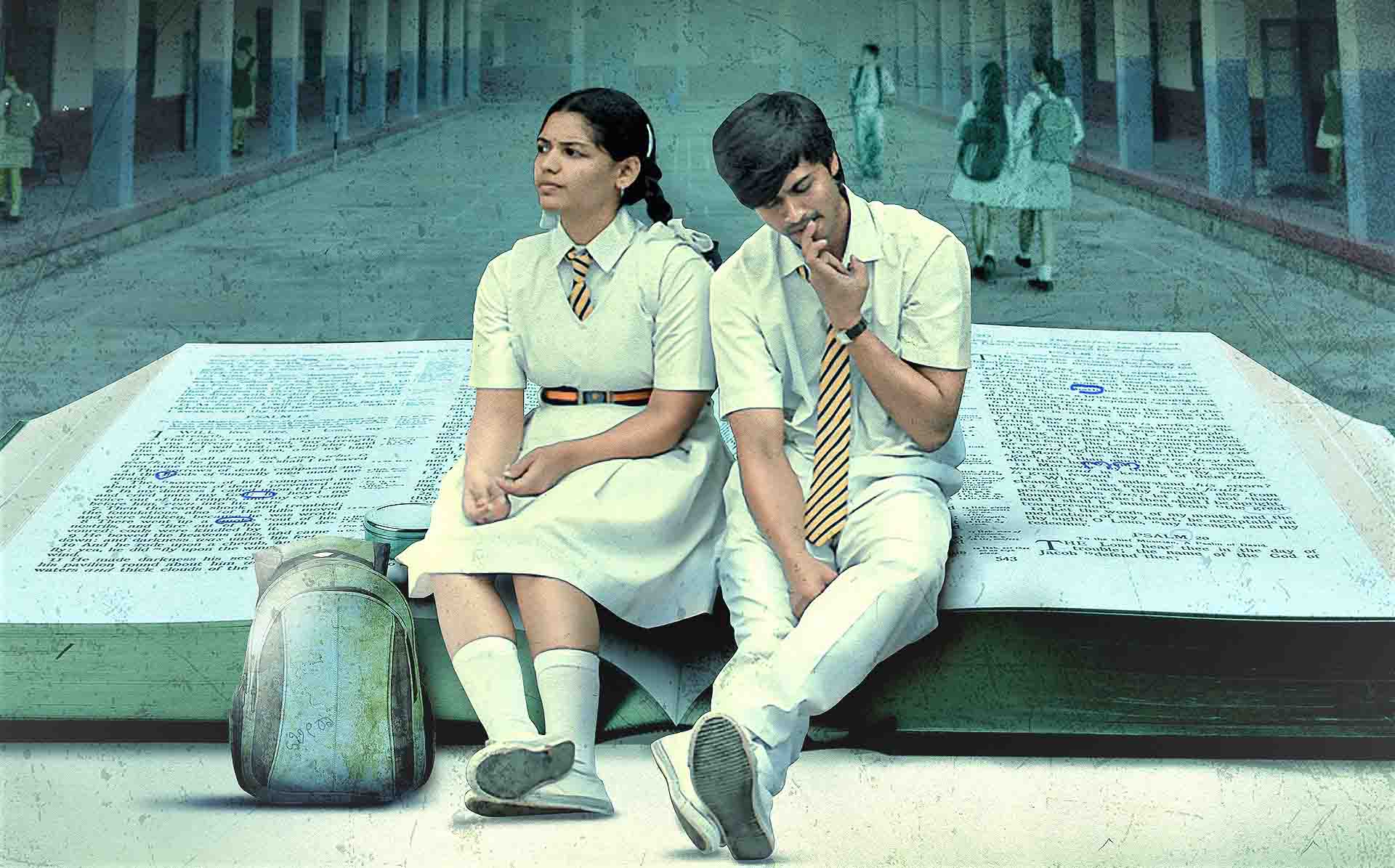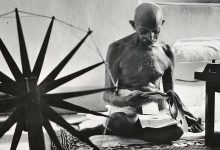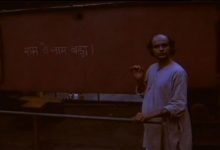Gantumoote, fallaciousness of the (fe)male gaze
Films are the primary source of entertainment for Indians and the cultural constructs created by them strongly influence the thinking of men, women, and most importantly, the new generation.”
-Cinema & Society: Shaping our Worldview: Beyond the Lens Investigation on the Impact of Gender Representation in Indian Films: Geena Davis Institute on Gender in Media & Oak Foundation Study.
Life imitates art far more than art imitates life.”
–Oscar Wilde.
Objectification, commodification, stalking and sexual harassment of heroines in cinema all in the name of professing love, saving the damsel in distress, heroine giving in to the ministrations of the hero, has long been a bane, the world over.
That, in majority cases, women, with aspirations, become willing participants looking to a glitz and glamourous career in the instant stardom providing industry, becoming putty in the hands of directors or film makers and producers, is another matter.
More so, it is an accepted belief that, if it is a man behind the camera, he, all the more ensures his female characters become lascivious objects of male gaze to drool upon. Giving play to the lurid imagination of voyeuristic audiences that takes its own flight of fancy as pro-active participants in the vapid visual narratives that unveil before them.
However, what is worrisome, and disconcerting is, that even women directors brook no bones being no better than their male counterparts when it comes to exploiting their own ilk, exceptions notwithstanding.
They are equally easily culpable when it comes to depiction of women and their subtle exploitation, all in the garb of championing feminist’s cause, providing a feminine perspective, intended at empowerment and emancipation. In the guise of tackling bold and women-centric concerns, women directors too, under this convenient ruse of giving voice to womenfolk, have no qualms conspiratorially playing to the gallery, driven by the vicious dictates of market economics, is what this essay perforce posits.
The case in point, the recently released and much valorised Kannada film Gantumoote (Bag-Age) by debutant Roopa Rao. Ironically, the very eponymous title bespeaks the burden the young director bears such that her film succeeds both at commercial box-office as also catch the eye of discerning audiences alike. As goes the adage: Kill two birds in one stone.
Roopa Rao, quitting her cushy job at IT bellwether Infosys, took to her aspirational calling, foraying into films after she cut her teeth with the 12 episode web series The Other Love Story, on lesbianism, where two girls from disparate backgrounds – Aadya and Aachal strike same-sex companionship as the case with the ill-fated boy-girl romance in Gantumoote.
In The Other Love Story, a format faithfully followed in Gantumoote, the protagonist Aadya is obsessed with movies. She pens her thoughts in her diary stating “I don’t know why everything that happens around me feels like a movie. I feel like a spectator, it’s hard to involve, because when I involve it is painful,” about her inability to comprehend the situation she finds herself closeted in, the tentativeness and swirl she feels to the happenings, as does Meera, in Gantumoote. A poster stuck on the wall of her living room proclaims “In a conflict between heart and doubt, follow your heart.” And that is precisely what Meera, as does Aadya, do in their respective roles.
At the pivot of Gantumoote is 16-year-old still pubescent teen Meera pursued by an emboldened classmate Babu, who, egged on by his friends, hands her a red rose to Meera. The director, on her part, seeks our indulgence to believe Meera is ignorant and innocent as to what it signifies by accepting it without batting an eyelid.
Here, straightaway you have the classic case of the girl making way for the boy stalking her at every opportunity, and unsolicited intrusion into her freedom and personal space. The way the scene is played is also much to be desired and the dialogues that follow suit despicable.
The director conveniently infuses in her heroine a facile naivety in keeping with her small town moorings to prove her immaturity in being unable to fathom what accepting the rose signifies and thanks Babu stating she could not have refused for the efforts he had put in.
For, when Babu asks her “What just thanks”? She retorts: What more should I say? Wondering what the fuss all about is blissfully unaware that Babu is euphorically exulting: “Macha she has accepted me friends.” To which they respond: Man you have indeed successfully snared her.”
That the setting of the film is a school rather than a college is another point of disquiet one needs to take note of. The film set in still conservative and tradition bound ‘90s and not in today’s freeway and footloose and fancy-free Internet and Mobile age makes it unacceptable cinematic liberties the director has taken.
In fact, Meera suffers nightmares from a disturbing episode in the cinema theatre when just nine, where a man had molested her. The trauma revisits her when Babu audaciously makes bold trying to get familiar and fresh with Meera.
As a pretext of asking what she is sketching, Babu consciously and deliberating places his palm on her thighs triggering childhood memory Meera had suffered as she hurries away shocked by his audacity. Once again the visual blatantly planting in young boys the wanton seeds to mimic it in real life.
Thereon, Meera tamely rebuffs Babu ignoring his and his friends Hi! Meera greeting, sloppily portrayed, with undue familiarity every time they pass her desk in the classroom, which again is much hard to digest, even in cinematic terms.
Meanwhile, Meera’s first flush of romance and adulthood is sublimely awakened when she sets her eyes on an otherwise quiescent and nondescript classmate Madhusudan, with familiar codas of cupid play getting underway.
Again as Meera sets her sights on Madhu she wonders whether it was the influence of cinema that propelled her to fall in love. What has attracted Meera towards Madhu is that his lock of hair falls on his forehead a la Salman Khan’s in Hum Aap Ke Hai Kaun which she had seen when in 9th standard.
What’s more the director has not be able to shy away from portraying her protagonist as hero’s love interest, despite the fact it is her young heroine Meera who first gives Madhu the comeuppance stealing suggestive glances at him.
Once this is established, with the girl opening her defenses, the entire dynamics changes with the boy slowly overcoming his awkwardness and boldly asserting his ownership of Meera as his prized property dictating his superiority getting familiar and fresh with her like a possessed tiger playing with its prey before the final kill.
Rebuffed, and witnessing Meera fanning and mooning over Madhu, you have an enraged Babu slut-shaming by calling her “Dagar (meaning slut) as also writing the word, unfamiliar to Meera, on her desk. Yet another case of suggestiveness that would be locked in the recess of the young similarly disposed viewers.
Every time Babu and his friends confront Meera they lose no moment in calling her thus with Babu even brushing himself against Meera – in a virtual case of physical assault as she passes him by. It is such scenes shown visually on the screen, without repercussions, that subconsciously trigger similar reactions in real life as well, leading to acid and other attacks on women happening in frequent manner by spurned Romeos who believe every girl are there for them to play wanton sport with and they quiescently succumb to such unwarranted attentions.
Likewise, prior to the red rose scene you have the bus stop incident. Here, a bunch boys pass lewd and sexist comments at Meera speaking of how Roopa Rao, as a woman director, is abjectly insensitive to her own gender.
“Boys/brothers (Maga) see what a super figure she has. Yeke Chinna (What Dear) won’t turn and acknowledge me? Hey Bulbul, Hey Dove, you are mine. Do you think I will simply let you off if you ignore and go away?” while his friend keeps whistling alongside.
Nothing could be more obnoxious construct of a scene the director has taken to show the predictable ‘male gaze’ all of which only catalyse such enactments in real life as well, examples of which galore where women have broken the glass ceiling in aspects and marching stride by stride with menfolk.
Likewise, you have another equally disturbing love play taking place in the classroom with Mohan authoritatively stating that he is love with Sajida, who much disturbed by this daring declaration, replies she does not like such things asking Meera to tell him that they are already looking for a groom for her.
Hearing which Mohan starts tattooing her name on his hand with his compass, while he has etched her name on his chest as well, points out another boy. “I have to get her. That’s it. Tell her I am in love with her,” he tells Meera even as a teary and traumatized Sajida rushes to the washroom, with all vehemence.
Meera then again wonders (note the film motif) whether it is the influence of Shahrukh Khan starrer Darr or Kannada film Shivrajkumar starrer Om that “I love you, you must love me,” has so influenced Mohan to even think that Sajida is his property and is meant for him alone.
My critique of Gantumoote, therefore, supposedly women-centric cinema, pertains to such the fallacies and fanatical declarations it cleverly perpetuates, in the garb of providing female gaze of its protagonist’s life experiences (more so all drawn from director’s own past), and taking to the typical boy stalking girl formula, than a detached and more realistic and aesthetic portrayal.
This is what I find problematic in films after films which are predominant commercial in nature. That Deepa Mehta created her own controversies with Fire with that slow-motion deliberate long take of love-making scene between Shabana Azmi and Nandita Das, is another classic case in point or recent Aruna Raje’s Marathi film Firebrand wherein you have the housewife encouraging another man to sleep with to rid the demons of childhood rape that still haunt her despite having an understanding husband.
The very fact that the film’s protagonist deeply influenced by the film she has seen, Hum Aap Ke Hai Kaun which triggers the 9th standard girl’s romantic hormones validates my case which I seek to put forth in furtherance of my critique of Gantumoote that it is no better than any crass commercial potboilers but done with sophistication camouflaging its more economic aspirations.
Furthermore, that her very first encounter during a cinema viewing session, at a nubile age of nine, when she is molested and which the heroine seeks to brush aside stating “why should I write about the abuse or even report it, thereby, give the molester prominence he may get as a result and it is better to move on,” only goes on to show, where director Roopa Rao’s sympathies lie and where her priorities are.
The young Meera persists in watching the film from balcony this time from the earlier Gandhi class, only to scour who her molester could have been, further buttresses my argument, film makers must consider the visual impact their cinemas can have on young minds, unless aesthetically and sensitively done.
That the girl at such a tender age was even allowed in a theatre to watch the film all alone is bit too hard to digest given the time the film is set in – the ‘90s, that too in a small town, despite all cinematic license one may excuse the director indulging in.
As a young girl the director may have done that, but depicting it visually on screen is another matter and bit unacceptable. No wonder the censors prudently certified it ‘A’ much to the consternation of the director who bemoaned that young adults would be kept away from her film and rightly and wisely so.
While it may be argued that one off incidents should not tarnish the entire industry. The most recent of episode of a man influenced to murder his wife after watching Malayalam film Drishyam and Tamil film 99, further strengthens my assertion unless audiences are educated to take sensible, detached and realistic approach to cinema and consider movies more than mere entertainment, strong, potent visuals take deep roots in their mind’s recess and psyche which they then reenact in reality believing they can get away like their heroes on the screen.
As a result, societies continue to suffer misdemeanours and violent incidents such as Nirbhaya, and the recent Hyderabad tragedy, which haunt larger public in the society, rousing the collective conscience of the diaspora for instant justice raising questions about the safety and security of their girl children and womenfolk.
While it is indisputable that one of the functions of cinema is to entertain its audiences, give wings to the assorted viewers to travel into an another world if only for its screen time, than lived, real one, providing window of escape from diurnal grind and mundanity of everyday life, one has to argue and assert that there is more to cinema than this.
For, beyond being a popular vehicle of mass, affordable, and easily accessible consumption, it is also a fact that cinema also plays a pivotal role in moulding and shaping opinions, constructing either positive or negative images, thereby reinforcing dominant and prevailing socio-cultural and political values.
Given cinema illiterate audiences that folk to theatres are susceptible to carry their screen experience into real life, it becomes even more incumbent upon film makers to exercise caution and be more responsible as to how they depict and delineate their narrative and its hidden homilies than duck under artistic liberty and freedom to do so.
As Geena Davis study substantiates: though films reflect society around them, they have the unique power to change society as well. Besides the portrayal of women in main roles influencing us, there is invidious subliminal conditioning that takes place by only seeing women playing subsidiary roles on screen, may be even more instrumental in shaping our thoughts.
I quote few observations from the study of those interviewed.
Whoever has seen whatever movie, he will wonder if he should do that also.”
–Dixit, 24.
People also copy the fashion, clothes, and attitudes from movies.”
–Vandana, 35.
It affects the mind of children. It also affects our society and culture.”
–Maneesha, 30.
Children are deeply affected by these characters and movies as they immediately start copying it after watching them.”
–Pinky, 38.
See, nowadays, girls are also bold, they smoke, they drink… Now the girls also want to do everything which a boy is doing.”
–Umeshbhai, 42.
Incidents of rape are increasing in society now. This is because of the effect of movies.”
–Rupa, 43.
If they show such content, awareness may not increase, but such crimes would increase.”
–Saleem, 44.
Hence, it becomes imperative how the particular film is packaged and received by the ultimate consumers – the viewers / audiences without being prejudicial to civil society norms on public conduct. For, a notion/perception predominantly based on a director’s beliefs, attitudes and values, combined with director’s own larger but misconstrued understanding of what audiences’ want and pandering suit to popular market demands, must be consciously eschewed for the larger good of society.
Furthermore, with women constituting a sizeable portion of cinema going population, and more so, the young adults – both male and female, the portrayal of women, the roles they play, the way they come across, on screen, the message these visual registers ultimately carry, is a crucial factor in breaking or reinforcing and determining the prevalent stereotypes that is already firmly entrenched in the society.
Besides, how it impacts the psyche of diaspora habituated to films more as a means of entertainment, to pass time, than assimilate and approach it as art and creative form that depict social realities or life experiences on screen becomes equally relevant.
Merely conceived and constructed just as entertainment, however, rabidly it may be, without an educated engagement and appreciation of cinema aesthetics as art form and not merely tool of entertainment, is doing great disservice to not only themselves but larger public in general.
The film has several such disturbing fault lines in its very construction and scripting that one watches with aghast at the cupid caper played out before you. For example, in mathematics class room scene you have Madhu asking the lecturer whether if someone did not give what they had promised on time, should then they not do so with interest.
The lecturer states it all depends what was agreed upon, who should have given what, without realising Madhu had asked Meera to kiss him which she had reluctantly not obliged. The next scene has Madhu cornering Meera in the classroom alone and series of kisses and lip lock picturised providing audiences gratuitous ideas to carry home with.
As if such wanton cupid play was not enough you have even more gross visuals coming in the form of Madhu and Meera making it in the public libraries lip-locking and getting physical, as also during school picnic, where following sudden cloud burst sees Madhu remove his shirt a la Salman Khan.
It is such blatantly exploitative and titillating visuals, pandering to familiar baser male desires to provide audiences pervert and prurient pleasures, with Meera and Madhu pirouetting on once they formalise their relationship that the director subvertly goes on catering to (fe)male gratification, with the two becoming licentious playground to milk their rendezvous for a trip in voyeurism. That you have another scene where you have Meera asking for cigarette and takes a puff also points to where the film’s intent lies and who it is surreptious catering to.
Needless to say, despite being a woman herself, Roopa Rao gloriously takes to depicting the world of women is the most regressive, demeaning and depressing manner which constantly thwarts any expectations of seeing Meera in a more plausible and positive manner that would offer similarly disposed young audiences to reflect upon than providing them indirect inspiration to mimic in their lives from what they have seen and experienced in the dark confines of the cinema hall.
Noticing that both Madhu and Meera are virtually pawing at each other, the mathematics teacher counsels them stating: I like you both as a couple, but you guys need to slow down, while cautioning especially Meera stating you will be the most affected from repercussions of your actions. You are my favourite student. The whole school depends on you. With two months for board exams be serious. To which a flippant Madhu, basking in romantic mood casually retorts there is a good two months to go, and we will make it.
But sadly, while Meera, given her natural disposition to do well at studies, tops her class, it is one downhill slide for Madhu, who keeps failing, and thereafter, unable to digest the fact that Meera has fared well, and he has miserably failed, goes into depression and commits suicide. This not before the following interlude between the two love birds.
Madhu asks Meera how you were able to top the school. I am not worthy to be with you. I am a repeater. What did you find in me? When Meera consoles him to not give up and there’s a next time he bites back so now you are a senior advising this dullard of a junior.
As has been persistently pointed out, cinema being undisputed mediator of socio-realities and personal dreams, it is imperative that one brings under scrutiny and interpret the dissonances and discrepancies inherent in the representation of women, especially in popular cinemas, for audiences to appreciate it as informed receptors of the narratives.
By showcasing the heroine as mere spectacle or an object of cupid play and dominant male desire, Roopa Rao allows her protagonist to be inexorably trapped in a world of callous, insensitive film making by faithfully following the time-tested template for formulaic no-brainer, insensitive entertainers .
Touted as an urban romance with the small town girl going through all the pangs of coming of age and experiencing the first flush of romance, Roopa Rao has not been to escape from the familiar stereotypical representation of her heroine as “sexual objects” the way men (read her young juveniles on the verge of adulthood) would enjoy seeing them on the silver screen….”
Also by repeatedly perpetuating the very illusion of cinema that her heroine breaks, Roopa Rao, in frame after frame, reinforces the idiosyncratic dangers that films trap the young minds into mimicking them in real life imitating the doings of their hero/heroines. Thereby, as her heroine Meera reflects deciding not to take Madhu’s suicidal path consoling herself that the episode and experience will a “Gantumoote (Bag-age) in her life” so does Roopa Rao by pursuing a more mundane commercial path than provide for a meaning, sensible and subtle cinema that can be celebrated and cheered. Sad!
References
Analysis of Hindi women-centric-films in India. Srijita Sarkar. University of Louisville
Stereotyping women in Indian Cinema. Vatika Sibal. St. Andrew’s College of Arts, Science & Commerce
Ahmed, S. Akbar (1992). ‘Bombay Films: The Cinema as Metaphor for Indian Society and Politics’. Modern Asian Studies 26, 2 (1992). 289-320. Great Britain.
Ahmed S Akbar (1992). Bombay Films: The Cinema as Metaphor for Indian Society & Politics. Modern Asian Studies 26, 2 (1992).
Nandkumar S (2011). The Stereotypical Portrayal of Women III Commercial Indian Cinema. University of Houston.
Laura Mulvey (1988) Visual Pleasure & Narrative Cinema. In Constance Penley (Ed), Feminism and Film Theory, New York: Routledge.
Mulvey L 1989: Visual & Other Pleasures. Bloomington & Indiana: Indiana University Press.
Cinema & Society: Shaping our Worldview: Beyond the Lens Investigation on the Impact of Gender Representation in Indian Films: Geena Davis Institute on Gender in Media & Oak Foundation Study.
External
Gantumoote on IMDB | Gantumoote official trailer





Leave a Reply
You must be logged in to post a comment.